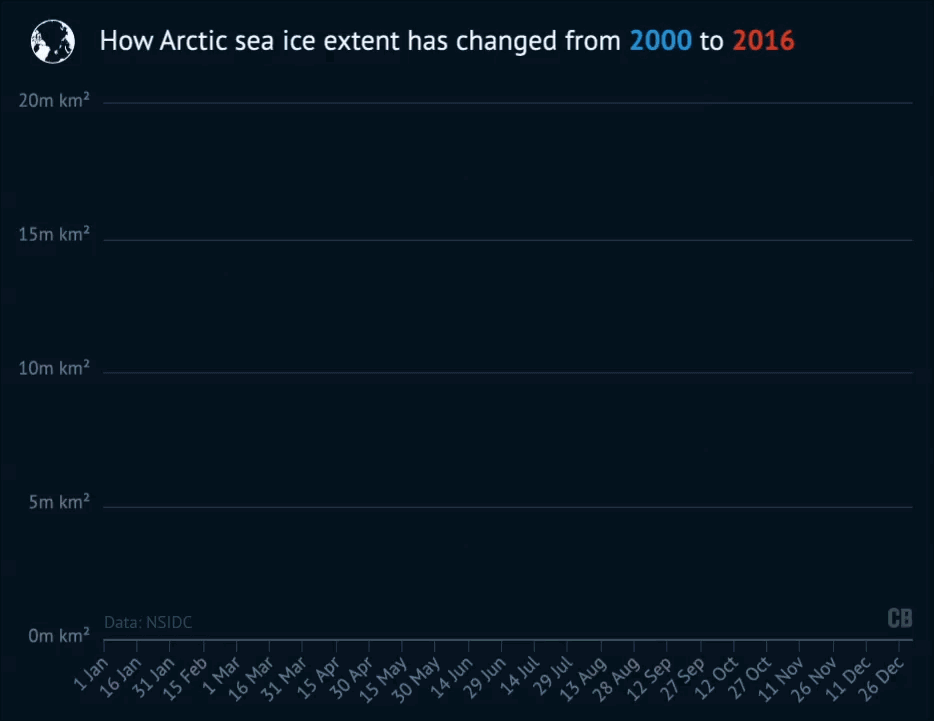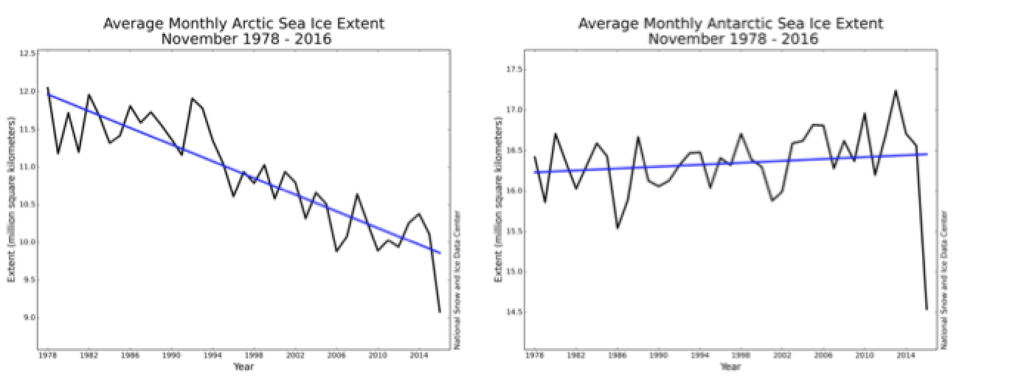2016… it’s felt like living in a history book at times. The spate of iconic celebrity deaths. The earthquakes. And of course, the disruptive politics of Brexit, Donald Trump, and now for New Zealanders, the unexpected resignation of our Prime Minister. It almost makes you wonder if everything is connected somehow…
I’m not saying that David Bowie was holding the fabric of the universe together, but *gestures broadly at everything*
— Katie Loewy (@SweetestCyanide) July 12, 2016
Against this backdrop, one of the year’s most important news stories has struggled for airtime: the profound changes happening to our planet. As the Earth continues to heat up, in 2016 we’ve seen increasingly clear signs of ‘climate disruption’.
A new new record
Before the year is through, both NASA and the World Meteorological Organisation say it is set to be the hottest on record. 2016 will take the title off 2015, which itself dethroned 2014. Noticing a pattern here?
For the year up to October, global temperatures are approximately 1.2°C above pre-industrial levels, edging ever closer to the 1.5°C line the world agreed to aim to stay below in the Paris Agreement. Driven by a strong El Niño on top of the long-term warming trend, the early months of the year came very close to breaching this limit for the first time. It will very likely be breached within a decade and on current trends, we’d expect the annual average to hit 1.5°C in 20-30 years’ time. This goes to show how little time we have to get carbon emissions drastically down.
This is pretty much global-warming-as-usual, but it’s what is currently happening at the poles that has some people freaking out.
Sea ice in unchartered territory
The unprecedented situation with global sea ice was drawn to attention when graphs like this started circulating on Twitter:
Source: James Renwick via Twitter
Scientists have been measuring the area of sea ice using satellites since 1979. As you can see in the graph, up until this year the total global sea ice extent [1] had followed a broadly similar pattern within a range. But the last two months have seen a divergence from that pattern into completely new territory. Compared to the 1981-2010 average, there is around 4 million square kilometres of sea ice missing – that’s roughly fifteen New Zealands. What is going on?
Firstly, this graph combines the sea ice in the Arctic and Antarctic, which are really different systems. To understand what we’re seeing we need to look at these separately. You can explore the full data yourself in the National Snow & Ice Data Centre’s great interactive tool here. The graphs below, comparing the November sea ice area since records began, give an immediate picture of what’s up.
Source: NSIDC. Note the y-axes do not start at zero.
Arctic – melting moments
Arctic sea ice area has been in decline since records began, and 2016 has continued that trend. While the September minimum was higher than in 2012, October and November have seen record lows due to exceptionally warm conditions.

Source: Carbon Brief from NSIDC data
Normally, the sea ice is rapidly regrowing during this period as the sun disappears and the Arctic heads into winter. But twice in the last two months, the sea ice extent has actually briefly declined with more melting than growing. Sea ice scientists said this was “almost unprecedented”.
There is no real mystery about what caused this – a combination of warmer air, warmer oceans, and wind patterns pushing the ice north. Air temperature in some areas of the Arctic has been an incredible 20°C warmer than normal (but still below freezing), while a blob of cold Arctic air has been displaced over Siberia. Events like this are related to the polar jet stream – a band of strong wind in the upper atmosphere encircling the pole –
which scientists agree may be being impacted by climate change.
Antarctic – the winds of change
The Antarctic sea ice story has been more mysterious and complex, and what we are seeing now is downright weird. As the earlier graph showed, Antarctic sea ice extent has actually had a slight increasing trend for the last decade or so. This year’s sudden drop – the lowest November extent by far – sticks out like a sore thumb.
Climate scientist Professor James Renwick explains in a blog post on Hot Topic that sea ice trends in the Antarctic have so far been driven by wind and circulation patterns, and the same likely applies to what we are seeing now. When I spoke to Dr Renwick he said it is possible that the recent trend was simply down to natural variability, and that most scientists expect the long-term global warming trend to take over at some point leading to a decline in Antarctic sea ice. It is too early to say whether what we are seeing now is the beginning of that or simply an anomaly. One thing’s for sure: there is plenty of work to do for the scientists studying this.
Expect the unexpected
We should be very concerned about the changes we are seeing at the poles for a number of reasons. Disappearing sea ice is not only a sign of a rapidly warming world, it accelerates this very process by increasing the amount of solar energy the Earth absorbs (because water is darker than ice). The impacts will be not only local, but wide-ranging – on weather patterns and ecological systems, for example – potentially triggering new feedback effects of which we are not yet aware.
More broadly, the dramatic changes we have seen this year are a reminder and warning that climate change is not a smooth, linear process. The Earth is a highly complex, nonlinear system. As long as we keep dumping carbon into the atmosphere and allow global warming to continue, we can expect more of this type of climate disruption.
With climate change, as with so much else, 2016 should teach us to expect the unexpected.
Notes:
[1] Sea ice extent is defined as the total area where the sea ice concentration is at least 15 percent.


